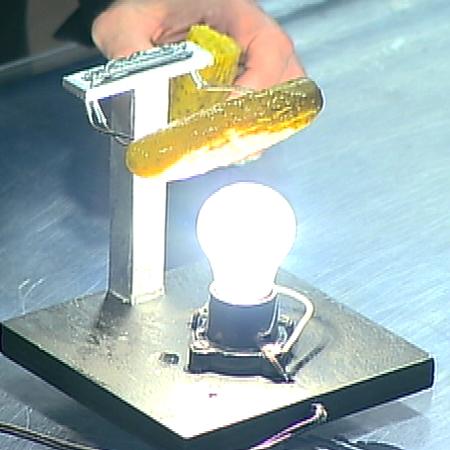**As Seen on The Ellen DeGeneres Show**
You’ve probably seen the “Electric Pickle” trick in a science class… but did you ever stop to think about how cool it is?!? That’s right, without the conductivity of one little pickle the light bulb won’t light up. Just connect the sensors with your favorite salty pickle and you’ll see an awesome current of electricity. Plus, you’ll cook the pickle at the same time… hey, sometimes science and cooking just go together.

